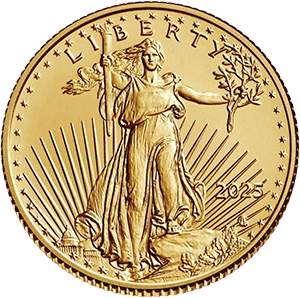
When it comes to investing in precious metals, gold and silver have long been popular choices. Each metal has its own unique characteristics, benefits, and potential drawbacks. The decision of whether to invest in gold, silver, or both depends on a variety of factors including financial goals, market conditions, and personal preferences. This blog will explore the advantages and disadvantages of investing in gold and silver, and provide insights into whether one metal is superior to the other or if a diversified approach is best.
Gold: The Timeless Standard
Gold has been valued for thousands of years for its beauty, rarity, and unique properties. It has served as a store of value, a medium of exchange, and a symbol of wealth and power. Here are some of the key reasons why investors choose gold:
-
Stability and Security: Gold is often seen as a safe haven asset. In times of economic uncertainty, geopolitical tensions, or market volatility, investors flock to gold to protect their wealth. Its value tends to remain stable or even increase during periods of crisis.
-
Inflation Hedge: Gold has historically been an effective hedge against inflation. As the purchasing power of fiat currencies decreases due to inflation, the value of gold tends to rise, preserving the investor's capital.
-
Liquidity: Gold is highly liquid, meaning it can be easily bought and sold in the global market. This makes it a convenient asset for investors who may need to quickly convert their holdings into cash.
-
Diversification: Including gold in an investment portfolio can provide diversification, reducing overall risk. Gold often moves inversely to stock markets, providing a buffer during market downturns.
Silver: The Versatile Metal
Silver, while often overshadowed by gold, has its own unique set of advantages. It has a long history as a monetary metal and is widely used in various industrial applications. Here are some reasons why investors might choose silver:
-
Affordability: Silver is significantly less expensive than gold, making it accessible to a wider range of investors. This lower price point allows for incremental investing and accumulation over time.
-
Industrial Demand: Silver has numerous industrial applications, including electronics, solar panels, medical devices, and batteries. This industrial demand can drive the price of silver, providing an additional layer of investment potential.
-
Higher Volatility: While higher volatility can be seen as a risk, it also presents opportunities for greater returns. Silver's price movements can be more pronounced than gold's, allowing for potential profit during periods of price spikes.
-
Inflation Hedge: Like gold, silver can act as a hedge against inflation. Its lower price point and higher volatility mean it can react more dramatically to economic changes, providing a dynamic option for inflation protection.
Comparing Gold and Silver: Key Considerations
When deciding between gold and silver, it’s important to consider several factors:
-
Market Trends and Economic Conditions: Gold often performs well during times of economic instability, while silver's price can be influenced by both economic conditions and industrial demand. Understanding current market trends can help inform your decision.
-
Investment Goals: If your primary goal is wealth preservation and stability, gold may be the better choice. If you're looking for growth potential and are willing to accept higher volatility, silver could be a more attractive option.
-
Portfolio Diversification: Both metals can play a valuable role in diversifying an investment portfolio. Combining gold and silver can provide a balance of stability and growth potential, reducing overall risk.
-
Liquidity Needs: If you need a highly liquid asset that can be easily converted to cash, gold's superior liquidity may be advantageous. Silver is also liquid but may require more effort to sell in large quantities.
The Case for Both: Diversified Precious Metal Investment
Many investors find that a diversified approach, including both gold and silver, offers the best of both worlds. By investing in both metals, you can balance the stability and security of gold with the growth potential and affordability of silver. Here’s how you can structure a diversified precious metals portfolio:
-
Determine Your Allocation: Decide how much of your portfolio you want to allocate to precious metals. A common recommendation is 5-10% of your total investment portfolio. Within this allocation, determine the proportion of gold and silver based on your risk tolerance and investment goals.
-
Regularly Rebalance: As the prices of gold and silver fluctuate, the proportion of each metal in your portfolio will change. Regularly rebalancing ensures that your investment strategy remains aligned with your goals.
-
Stay Informed: Keep up-to-date with market trends, economic indicators, and industrial developments. Staying informed will help you make educated decisions about buying, holding, or selling your precious metals.
-
Consider Different Forms: Both gold and silver can be purchased in various forms, including coins, bars, and exchange-traded funds (ETFs). Each form has its own advantages and considerations, so choose the one that best fits your investment strategy.
Conclusion: Gold, Silver, or Both?
Ultimately, the decision of whether to invest in gold, silver, or both depends on your individual financial goals, risk tolerance, and market outlook. Gold offers stability, security, and liquidity, making it an ideal choice for those seeking to preserve wealth and hedge against inflation. Silver, on the other hand, provides affordability, industrial demand, and higher growth potential, appealing to investors looking for dynamic opportunities.
For many investors, a diversified approach that includes both gold and silver offers the best balance of benefits. By combining the strengths of each metal, you can create a resilient and versatile investment portfolio that can withstand economic fluctuations and capitalize on market opportunities.
Whether you choose gold, silver, or a combination of both, investing in precious metals can be a valuable component of a well-rounded investment strategy. With careful planning and informed decision-making, you can harness the unique advantages of these timeless assets to achieve your financial goals.



